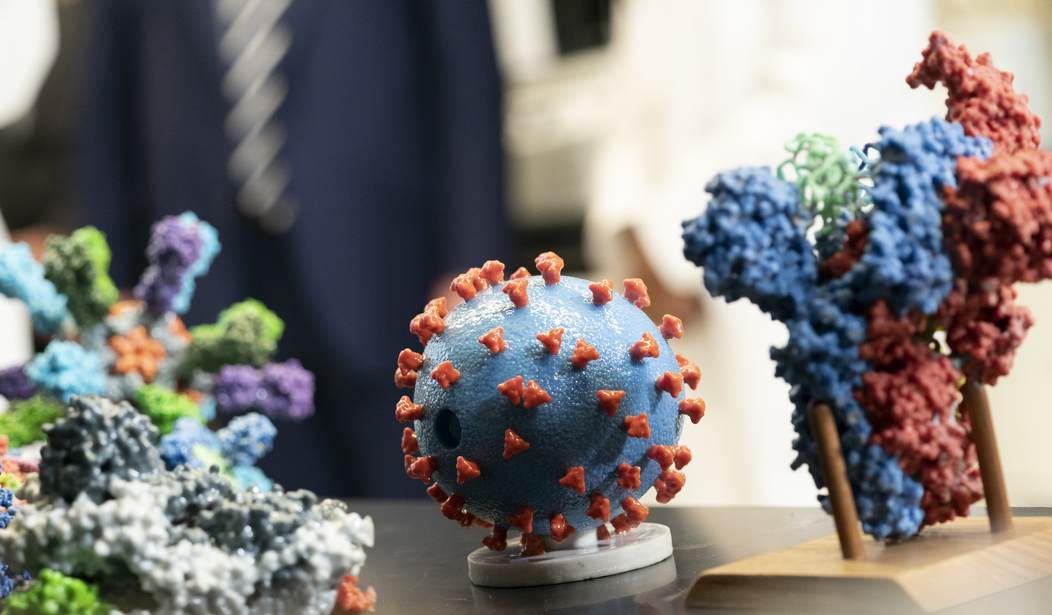Dr. Richard Ebright, a prominent molecular biologist and professor at Rutgers University, has been a consistent voice of reason since the coronavirus pandemic began (and even longer, judging by this 2004 article about him). In March 2020 he co-authored a letter in The Lancet urging “an objective, open, and transparent scientific debate about the origin of SARS-CoV-2,” arguing that there was “no scientifically validated evidence that directly supports a natural origin.” More recently, Ebright was part of a panel testifying before Congress in August 2022 about gain of function research and (lack of) oversight in a hearing led by Sen. Rand Paul (R-KY).
Since that time, the World Health Organization (WHO) closed its investigation into COVID origins due to non-cooperation with China, and both the US Department of Energy and FBI Director Christopher Wray have said that the pandemic most likely originated with a lab leak.
Friday night, Ebright posted a Twitter thread of “nine facts about the origin of SARS-CoV-2 that everyone needs to know,” and indeed, this information (which will not be news to RedState readers) needs to be spread far and wide. As Ebright noted at the end of the thread, he ended up listing 10 facts instead of nine.
3) SARS-CoV-2 entered humans either through a natural accident (just as in the first entry of the original SARS coronavirus into humans, which occurred through natural spillover in rural Guangdong province in 2002)….
— Richard H. Ebright (@R_H_Ebright) March 25, 2023
For ease of reading I’ve transcribed the thread, and added in relevant links and emphasized various points.
The nine facts about the origin of SARS-CoV-2 that everyone needs to know are as follows:
1) SARS-CoV-2 is related to bat SARS-like coronaviruses from southern China and northern Laos.
2) SARS-CoV-2 entered humans in or near Wuhan in August-November 2019.
3) SARS-CoV-2 entered humans either through a natural accident (just as in the first entry of the original SARS coronavirus into humans, which occurred through natural spillover in rural Guangdong province in 2002) or through a research accident (just as in the second third, fourth, and fifth entries of the original SARS coronavirus into humans, which occurred through a lab accident in Singapore in 2003, a lab accident in Taipei in 2003, and two separate lab accidents in Beijing in 2004)
4) Wuhan is located 1,000 km from the nearest wild bats with SARS-CoV-2-like coronaviruses.
5) Wuhan has labs that, at the start of the pandemic, conducted the world’s largest research program on bat SARS-like coronaviruses, possessed the world’s largest collection of bat SARS-like coronaviruses, and possessed the world’s only sample of a SARS-CoV-2-like coronavirus.
6) In 2016-2018, the Wuhan Institute of Virology constructed a series of novel chimeric SARS-like coronaviruses that combined the spike gene of one bat SARS-like coronavirus with the rest of the genetic information of another bat SARS-like coronavirus and identified viruses that were able to infect and replicate efficiently in human airway cells and that had 10,000x enhanced viral growth and 4x enhanced lethality in mice engineered to display human receptors on cells. In other words, in the years before the start of the pandemic, the Wuhan Institute of Virology had taken most of the steps needed to convert a natural bat SARS-like coronavirus to a novel human pandemic pathogen having the properties of SARS-CoV-2.
RedState’s Scott Hounsell was the first to report on the creation of those viruses, in May 2021, linking to the actual studies themselves and to the grant documents funding said research months before The Intercept reported on them.
7) In 2018, the Wuhan Institute of Virology and its collaborators proposed to construct an expanded series of novel chimeric SARS-like coronaviruses, this time using newly identified spike genes having affinities for human receptors that ranged from very low to very high; and proposed to insert furin cleavage sites — a feature that is present in SARS-CoV-2 but not in any of the hundreds of other known SARS-like coronaviruses and that is crucial for the high transmissibility of SARS-CoV-2 — into SARS-like coronaviruses.
In other words, just a year before the start of the pandemic, the Wuhan Institute of Virology and its collaborators proposed to take the remaining steps needed to convert a natural bat SARS-like coronavirus to a novel human pandemic pathogen having the properties of SARS-CoV-2.
8) In 2016-2019, the Wuhan Institute of Virology constructed and characterized SARS-like coronaviruses at biosafety level 2, a level inadequate for work with enhanced potential pandemic pathogens and inadequate to contain a virus having the transmissibility of SARS-CoV-2.
9) From the start of the pandemic, the Wuhan Institute of Virology and its collaborators have withheld information, misrepresented facts, and obstructed investigation…even though, if not connected to origin, they most easily could have cleared their names through cooperation.
10) A preponderance of evidence, including both the scientific evidence (facts 1-3) and the documentary evidence (facts 4-9), indicates that SARS-CoV-2 likely entered humans through a laboratory accident.
All statements in all posts are demonstrable facts.
Not surprisingly, Ebright was immediately challenged despite his expertise in the field. One caution was incredibly ironic, given the lack of such cautions aimed at people like Anthony Fauci, Angela Rasmussen, Peter Daszak, Ralph Baric, and others over the last three-plus years.
A superspreader event occurred in mid-December 2019 at Huanan Seafood Market. That superspreader event cannot, even in principle, explain the entry of SARS-CoV-2 into humans in August-November 2019.
(For your reference, December 2019 occurred after August-November 2019.)
— Richard H. Ebright (@R_H_Ebright) March 25, 2023
“Don’t leave out options that might challenge your own logic.” Wise words, undoubtedly, but words ignored by people who know better, to the harm of every person on the planet.













Join the conversation as a VIP Member